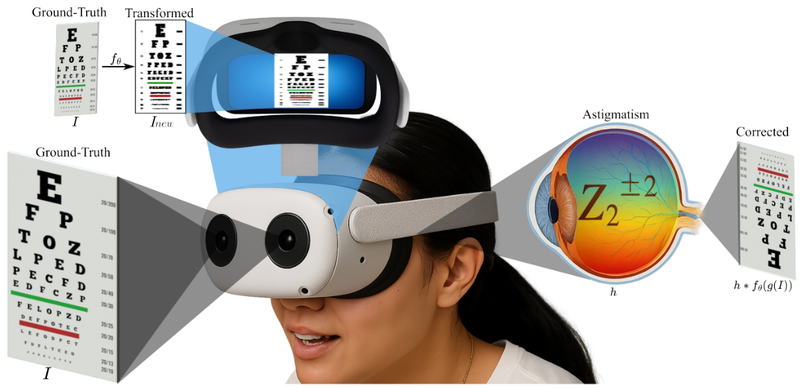
Abstract
A computational correction strategy for eye aberrations, specifically targeting astigmatism, is proposed. This method computationally designs a transformed image that allows individuals with astigmatism to perceive the original scene with improved clarity. To achieve this, a convolutional neural network (CNN) is trained to minimize the error between a well-defined reference image and an image generated by convolving the transformed image with a simulated point spread function (PSF) representative of a person with astigmatism, modeled using the second-order Zernike polynomials Z22 and Z−22 • Additionally, upsampling techniques are applied to simulate zoom effects in the scene. Quantitative results demonstrate that bicubic scaling with a factor of 2 significantly enhances the perceived visual acuity of the person, increasing SSIM from 0.86 to 0.98 and PSNR from 25.8 dB to 37.7 dB under moderate distortion (severity 1.0). The model was trained on images from the KITTI dataset with simulated aberrations and evaluated on the DIV2K dataset, confirming its generalization to out-of-distribution data. These results highlight the effectiveness of integrating physics-based optical modeling with deep learning for ocular aberration correction.